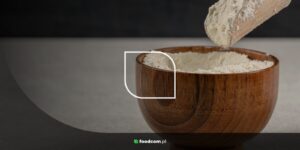Dehydroacetic acid (E265) – what is it?
Dehydroacetic acid, also known as E265, is an organic chemical compound used as a food additive. It takes the form of a white or yellowish powder with a characteristic odor. It is a substance with preservative, antibacterial and antifungal properties.
It is a synthetic organic acid that can be obtained by various chemical methods. Its use in the food industry is regulated by relevant food safety standards and regulations.
Properties of dehydroacetic acid (E265)
Dehydroacetic acid (E265) has a number of properties that make it an attractive food additive:
- Preservative efficacy: Acts as a preservative by inhibiting the growth of bacteria, mold and yeast, which prolongs the shelf life of food products.
- Antimicrobial effect: This compound shows the ability to eliminate or inhibit the growth of bacteria, which contributes to the prevention of food poisoning.
- Antifungal properties: Dehydroacetic acid can also prevent the growth of fungi, which is important in keeping food fresh and safe.
- Low toxicity: At appropriate concentrations, dehydroacetic acid is considered safe for consumption, provided that established intake limits are observed.
Uses of dehydroacetic acid (E265)
Dehydroacetic acid (E265) is widely used in the food industry, mainly as an additive to products such as:
- Silage: Used to preserve vegetable pickles such as cucumbers, cabbage and peppers.
- Cheeses: Added to some cheeses to prevent mold growth.
- Meat products: Often used in processed meats, such as sausages, to increase shelf life.
- Beverages: May be present in some fruit drinks as a preservative.
Where to buy dehydroacetic acid (E265)?
Dehydroacetic acid (E265) is available in grocery stores, especially in the food additives section. It can also be purchased from online stores that specialize in selling products for the food industry.
Dehydroacetic acid (E265) and its functions in food
Dehydroacetic acid (E265) plays an important role in the food industry, ensuring longer shelf life and safety of food products. Its effectiveness against bacteria, yeast and fungi makes it a valued additive, especially in products requiring long-term storage. However, due to its properties, it is important to use it in accordance with safety guidelines and to maintain appropriate consumption limits.
![Analiza rynku białka grochu 2025 [Global Report] Analiza rynku białka grochu 2025 [Global Report]](https://foodcom.pl/wp-content/uploads/2024/10/pea-protein-blog-300x150.png)



